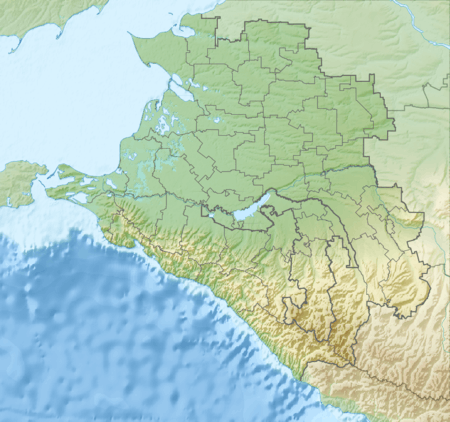Hatuqwai people
The Hatuqwai (self-designation: Adyghe: Хьатыкъуай, romanized: Hatyqwaj; Arabic: حتوقاي; Russian: Хатукай, Xatykaj, Гатюкай, Gatjukaj, Turkish: Hatukay) are a tribe of the Adyghe or Circassian people.[1] There is, however, no well-established spelling for their name, and the variants are Hatukay, Hatuqwai, Hetuqwai, Hatukaj, Hatquai, Tatukai, Khatukai, Gatukai, Gatiukai, and Khatoukhay.[2]
History

The Hatuqwai are considered to be a western Circassian tribal princedom whose homeland lay along the banks of the Kuban River. The Hatuqwai people lived mostly in the mountains between the lower valleys of the Pshish River and the Belaya River.[3] Due to their small size and closeness to Temirgoy tribe, they were considered as one of the subgroups of Temirgoy. Their neighbours were Bzhedug (West), Abadzekhs (South) and, naturally, Temirgoys (East). The most respectable family was Kerkenoko.
In the time before the Russian invasion, the Hatuqwai were known as a powerful and warlike tribe that fought many wars both with other Circassian tribes as well as against the Crimean Tatars.
The most famous of the Hatuqwai princes was named Aslan-Giray. He was not physically strong, but rather was a skilled public speaker and a skilled leader. Under his rule, the Hatuqwai reached the height of their power. After his death, the tribe soon fell into disarray and civil war, and the tribe lost most of its former power and influence.
After Imperial Russia's conquest of the Caucasus in the 1860s the tribe's homeland was occupied, and its members were scattered among the other Circassian tribes, resulting in the Hatuqwai effectively ceasing to exist as a separate entity.
Name
One theory about the origin of the name 'Hatuqwai' is that it is from Хьаты ("Hatti") + Къуэ ("son"); meaning "Hattic son". 'Hatti' is an ancient name, originally referring to a non-Indo-European people of ancient Anatolia. The Hittites (self-designation 'Nesili') are known by the same name, even though they were Indo-Europeans and absorbed the Hatti. This Circassian tribe may preserve this name. This name also occurs elsewhere in the Caucasus in an Ossetian Nart saga wherein the hero Batradz is said to speak in Hattiæg, 'Hattic.'
Another theory is that the names derives from Prince Inal the Great's son Temruk's son Hatko, who was prince of the Taman Peninsula. His principality is called Хьатыкъуай (Place of Hatko) and the people of the principality are described as "From Hatuqwai". Thus the name of the principality became the name of the tribe.
Hatuqwai Families
Hatuqwai Families (лъэкъуацIэ):
| Circassian | Latin transcription | Russian |
|---|---|---|
| ЛӀымаф, ЛӀымафкъо | L'mafqo | Тлимаховы |
| Бзадж | Bzadj | - |
| Иуанук | Iuanuque | - |
| Мафшоко | Mafshoque | Мафошов |
| Педис | Pedis | Педисов |
| Такрук | Takruko | - |
| Шегероко | Shegeroy | Шегероков |
See also
References
- Cunningham, B. (1977). The New Jersey ethnic experience. W. H. Wise. p. 108. Retrieved 20 July 2018.
... or Pontic branch, consisting of Abkhaz, Ubykh, and Circassian proper (or Adyghe). The Circassians themselves are divided into some fifteen different clans, including the Abadsakh, Besliney, Bjedoogh, Hatukay, Kabardey, Kamurggoi, Shapsoogh, and Ubykh.
- Peoples of the USSR: An Ethnographic Handbook. Taylor & Francis. 2017. p. 79. ISBN 978-1-315-47540-0. Retrieved 20 July 2018.
- Atlas of Caucasian languages (a pdf file) Archived 2006-03-10 at the Wayback Machine